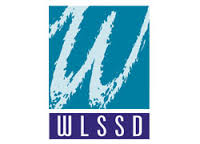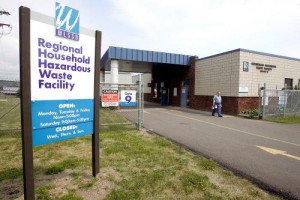
 A sanitary district might not be the first place you think of when recycling batteries. But the Western Lake Superior Sanitary District (WLSSD) holds a special place in recycling circles as one of the few, if not only, government entity that promotes battery recycling to protect a local watershed.
A sanitary district might not be the first place you think of when recycling batteries. But the Western Lake Superior Sanitary District (WLSSD) holds a special place in recycling circles as one of the few, if not only, government entity that promotes battery recycling to protect a local watershed.
Created by the Minnesota legislature in 1971, WLSSD is responsible for protecting the waterways and land surrounding the lower St. Louis River Basin. It oversees both solid waste and wastewater services for a 530-square mile region around Duluth, Minn., that includes 17 communities in two counties. Rechargeable battery recycling is one of several programs WLSSD employs to help stop household hazardous waste (HHW) from entering Lake Superior or the landfill.
“This region relies on the natural beauty of its environment to enrich our residents’ quality of life and help business to thrive. We have robust environmental laws to reduce the impact of hazardous waste on our natural waterways,” said Karen Anderson, director of community relations, WLSSD. “So our community is very active in protecting the environment. People want to do the right thing when disposing of their waste materials.”
It All Started with Hearing Aids
 Battery recycling began back in the mid-1990s, when WLSSD first placed boxes for hearing aid batteries in local pharmacies. The batteries contained mercury that could be released into the wastershed if tossed in the trash. This marked the first WLSSD battery recycling campaign to educate hearing aid wearers about used battery disposal. The program then expanded to rechargeable and other hazardous battery chemistries.
Battery recycling began back in the mid-1990s, when WLSSD first placed boxes for hearing aid batteries in local pharmacies. The batteries contained mercury that could be released into the wastershed if tossed in the trash. This marked the first WLSSD battery recycling campaign to educate hearing aid wearers about used battery disposal. The program then expanded to rechargeable and other hazardous battery chemistries.
Today the WLSSD’s HHW program has 100+ waste streams and five locations, including the state’s first and largest year ‘round HHW facility, a Materials Recovery Center and three sites in its nine rural recycling centers. Call2Recycle’s network offers 42 drop-off sites within 100 miles of Duluth, including the WLSSD service centers. Improving drop-off convenience has always been one of the primary goals of the program.
“We began gathering household hazardous waste in 1985 when most other government agencies were just beginning,” said Heidi Ringhofer, director of solid waste services, WLSSD. “We are the grandfather program—other HHW sites have learned from us. Minnesota has one of the leading HHW networks in the nation.”
Education, Education, Education
When it comes to educating residents about batteries or any other recyclable waste, WLSSD relies primarily on the old-fashioned approach: word of mouth. The public education staff attends community events, such as an annual home and builder show and local county fair, and delivers programs to parents of small children in the Healthy Homes program. A battery game is also popular; people are asked to sort acrylic-encased batteries to test their knowledge of which are recyclable. A Battery Basics brochure gives information about battery sorting and disposal.
“Batteries are one of those common items that everyone has. We face the same issue as other agencies: proper disposal education. Residents won’t drive someplace to dispose of one battery. But we want to discourage people from stockpiling or tossing them out in the trash because they think it is okay to throw away one battery,” said Ringhofer.
Another unusual collection strategy involves local charitable thrift stores that want to recycle the rechargeable batteries contained in donated goods that are unsaleable. WLSSD picks up the batteries up from locations across town, creating goodwill in the community.
Collections Have Doubled in the Past 2 Years
During the past 14 years, WLSSD has collected more than 35,300 pounds (15,875 kg) of rechargeable batteries and 175 cellphones. Almost half of that amount, or approximately 17,000 pounds (7,711 kg), was collected during the past two years, thanks to Call2Recycle’s GreenVantage program that helps municipalities offset some of their battery sorting and handling costs.
The partnership continues to blossom. “We would not be successful without the help of our residents and businesses. We put the infrastructure in place so they can properly dispose of their waste,” said Anderson. “Call2Recycle takes the responsibility of managing batteries through their end of life recycling. Plus, Call2Recycle certifies that the recycling waste is not going off shore. That is important to us.”
ShareJUN